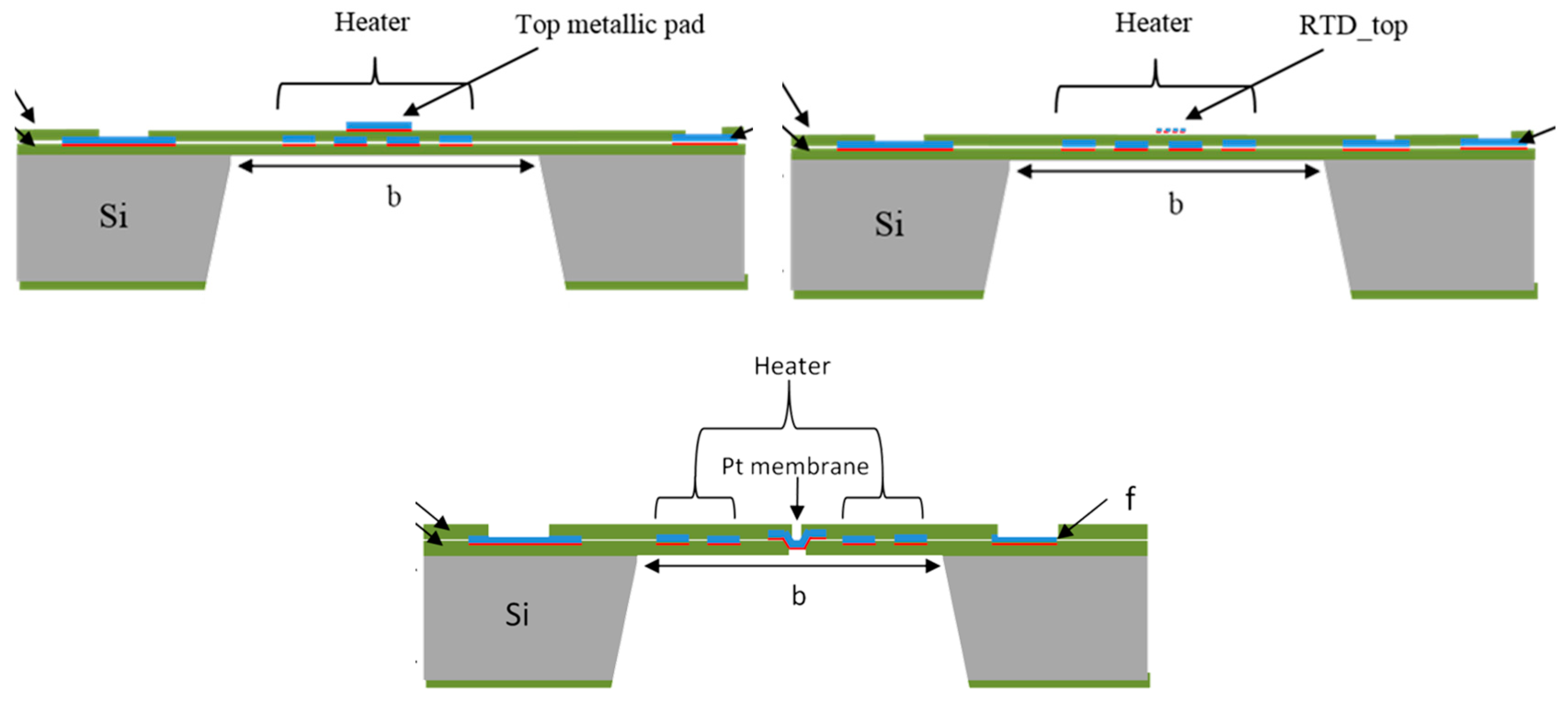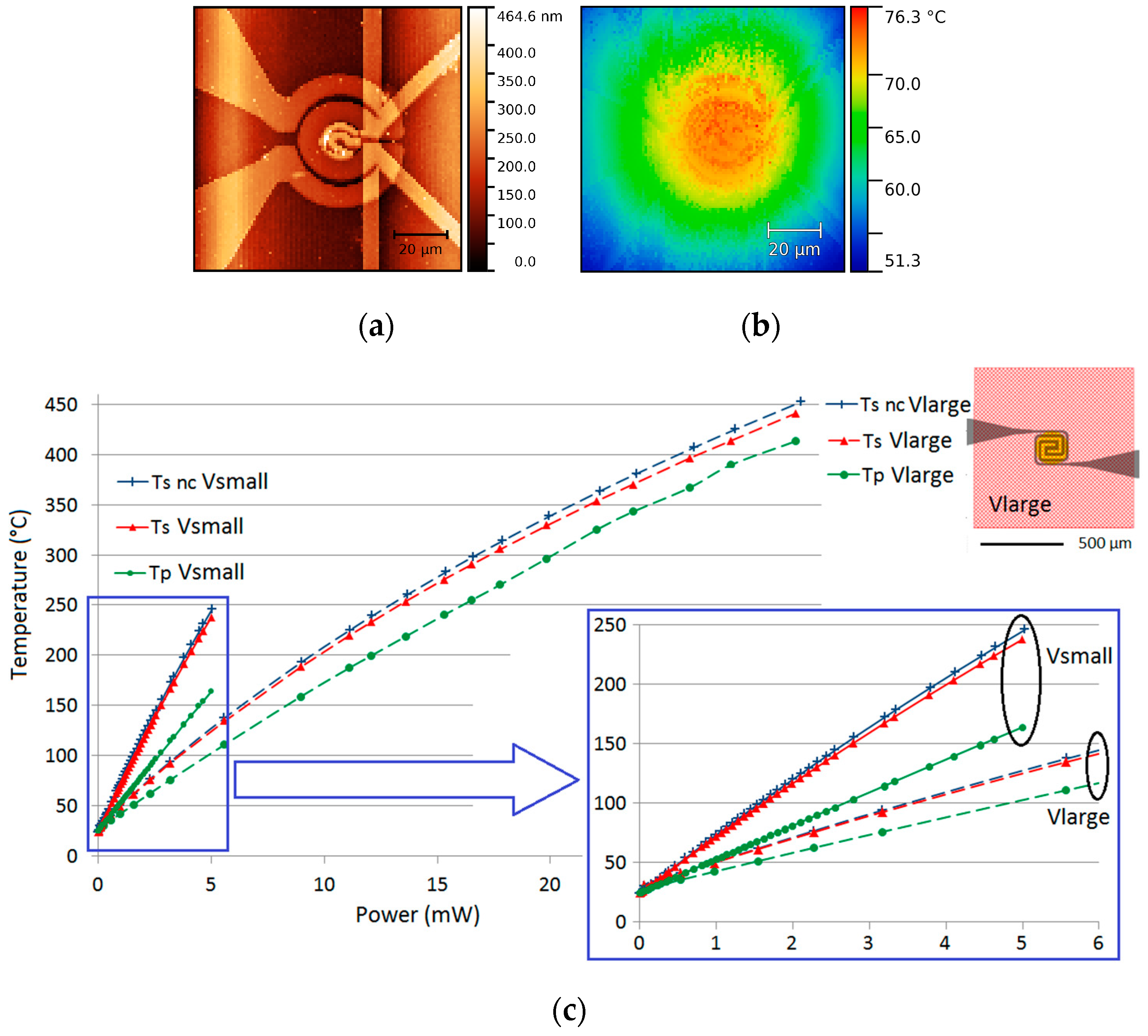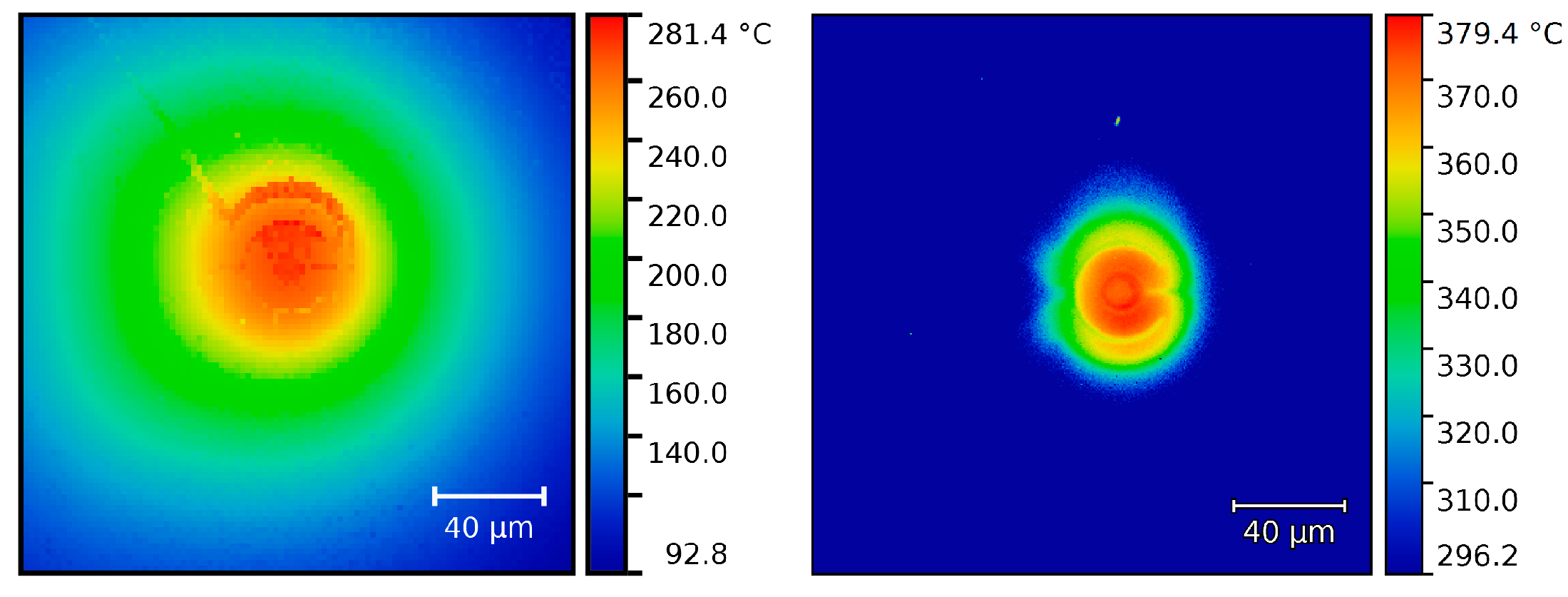Low-Power Heating Platform for the Characterization and Calibration of Scanning Thermal Probes †
Abstract
:1. Introduction
2. Design and Fabrication
3. Results
4. Conclusions
Acknowledgments
Conflicts of Interest
References
- Bontempi, A.; Thiery, L.; Teyssieux, D.; Briand, D.; Vairac, P. Quantitative thermal microscopy using thermoelectric probe in passive mode. Rev. Sci. Instrum. 2013, 84, 103703. [Google Scholar] [CrossRef]
- Bontempi, A.; Nguyen, T.P.; Salut, R.; Thiery, L.; Teyssieux, D.; Vairac, P. Scanning thermal microscopy based on a quartz tuning fork and a microthermocouple in active mode (2ω method). Rev. Sci. Instrum. 2016, 87, 063702. [Google Scholar] [CrossRef]
- Thiery, A.; Toullier, S.; Teyssieux, D.; Briand, D. Thermal contact calibration between a thermocouple probe and a microhotplate. J. Heat Transf. 2008, 130, 091601. [Google Scholar] [CrossRef]
- Lemaire, E.; Nguyen, T.P.; Bontempi, A.; Thiery, L.; Teyssieux, D.; Vairac, P.; Shea, H.; Briand, D. Micromachined calibration chip with heat source and temperature sensors for scanning thermal metrology (SThM). Procedia Eng. 2015, 120, 130–133. [Google Scholar] [CrossRef]
- Teyssieux, D.; Thiery, L.; Cretin, B. Near-infrared thermography using a charge-coupled device camera: Application to microsystems. Rev. Sci. Instrum. 2007, 78, 034902. [Google Scholar] [CrossRef]





© 2017 by the authors. Licensee MDPI, Basel, Switzerland. This article is an open access article distributed under the terms and conditions of the Creative Commons Attribution (CC BY) license (https://creativecommons.org/licenses/by/4.0/).
Share and Cite
Briand, D.; Nguyen, T.P.; Lemaire, E.; Thiery, L.; Vairac, P. Low-Power Heating Platform for the Characterization and Calibration of Scanning Thermal Probes. Proceedings 2017, 1, 334. https://doi.org/10.3390/proceedings1040334
Briand D, Nguyen TP, Lemaire E, Thiery L, Vairac P. Low-Power Heating Platform for the Characterization and Calibration of Scanning Thermal Probes. Proceedings. 2017; 1(4):334. https://doi.org/10.3390/proceedings1040334
Chicago/Turabian StyleBriand, Danick, Tran Phong Nguyen, Etienne Lemaire, L. Thiery, and P. Vairac. 2017. "Low-Power Heating Platform for the Characterization and Calibration of Scanning Thermal Probes" Proceedings 1, no. 4: 334. https://doi.org/10.3390/proceedings1040334



